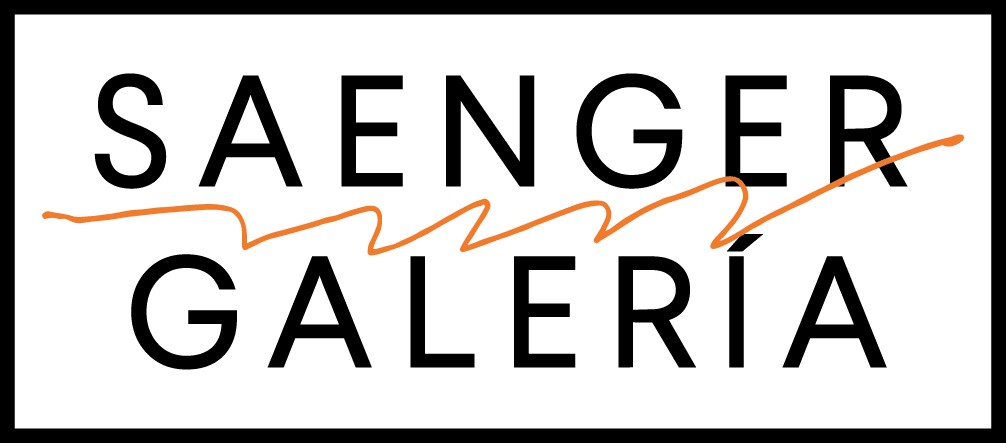Inversión by Cristopher Cichocki: Curated by Michel Blancsubé
Baltasar Gracián
Cristopher Cichocki's work follows in the footsteps of a certain Robert Smithson (1938-1973), a visionary artist of the second half of the twentieth century, who recommended, among other things, that the water of the vase should not be changed hastily, since under the microscope it revealed an increasingly fascinating bacteriological life as the flowers decayed. One of the recurring themes in Cichocki's work is water as an element essential to life, but also in the traces left by its distant presence in sites that are now arid. Living in Palm Springs, his preferred territories of investigation are the Californian deserts, from which he gathers various materials that he integrates into his paintings and sculptures, not without first giving them an application of fluorescent color situated on the fringe of psychedelia, construction markings, and deep-sea bioluminescence.
The relationships between aquifer areas, industrial activity and humans are at the center of the dynamics that interest Cichocki. We remember Smithson's wanderings through the industrial wastelands of Passaic, New Jersey, in the late 1960s. Today, they resonate with those carried out by Cichocki on the shores of the Salton Sea, in which his elder took an interest and of which he spoke in an interview conducted by Alison Sky two months before his accidental death (Entropy made visible, 1973). The Colorado River regularly rose out of its banks, with consequences that are easy to imagine. To remedy the situation, a canal was built under the presidency of Theodore Roosevelt (1901-1909). Poorly conceived and, above all, poorly laid out, this “masterpiece” of civil engineering quickly became a providential drain through which the waters flowed, converting the former Lake Cahuila into an inland sea. The Salton Sea, considered the greatest ecological disaster in the state's history, is California's largest body of water, now 30 percent saltier than the Pacific Ocean and saturated with pesticides. Like Smithson in his day, it is these entropic situations caused by human activity that Cichocki points to through his works and site-responsive audiovisual performances.
In the interview quoted above, Smithson mentioned the impossibility of swimming in the Salton Sea, due to the ubiquitous barnacles on all the rocks. These are sharp crustaceans that Cichocki uses in his paintings as well as in the preparations he films through a microscope. Algae from Xochimilco, an exceptional site of biodiversity, as well as synthetic and natural micro-organisms collected during the artist's visits in Mexico City, join the barnacles under the microscope. The resulting images are projected on live onto a vast half-moon-shaped screen during a series of three sound and visual performances on the gallery roof. Seven biomorphic light paintings complete the first presentation of the artist's work in Mexico City.
Cichocki defines his work as renewed earth art and, like the artists who, in the late 1960s, found in nature the material and place on the scale of their ambitions, he apprehends the geological present of the planet in the universe, considering the past without limits of time or space. His works feature a reflexive play of back and forth between micro and macro provoking new perceptions through fractal inversions.
— Michel Blancsubé
ph. Aimée Suárez


